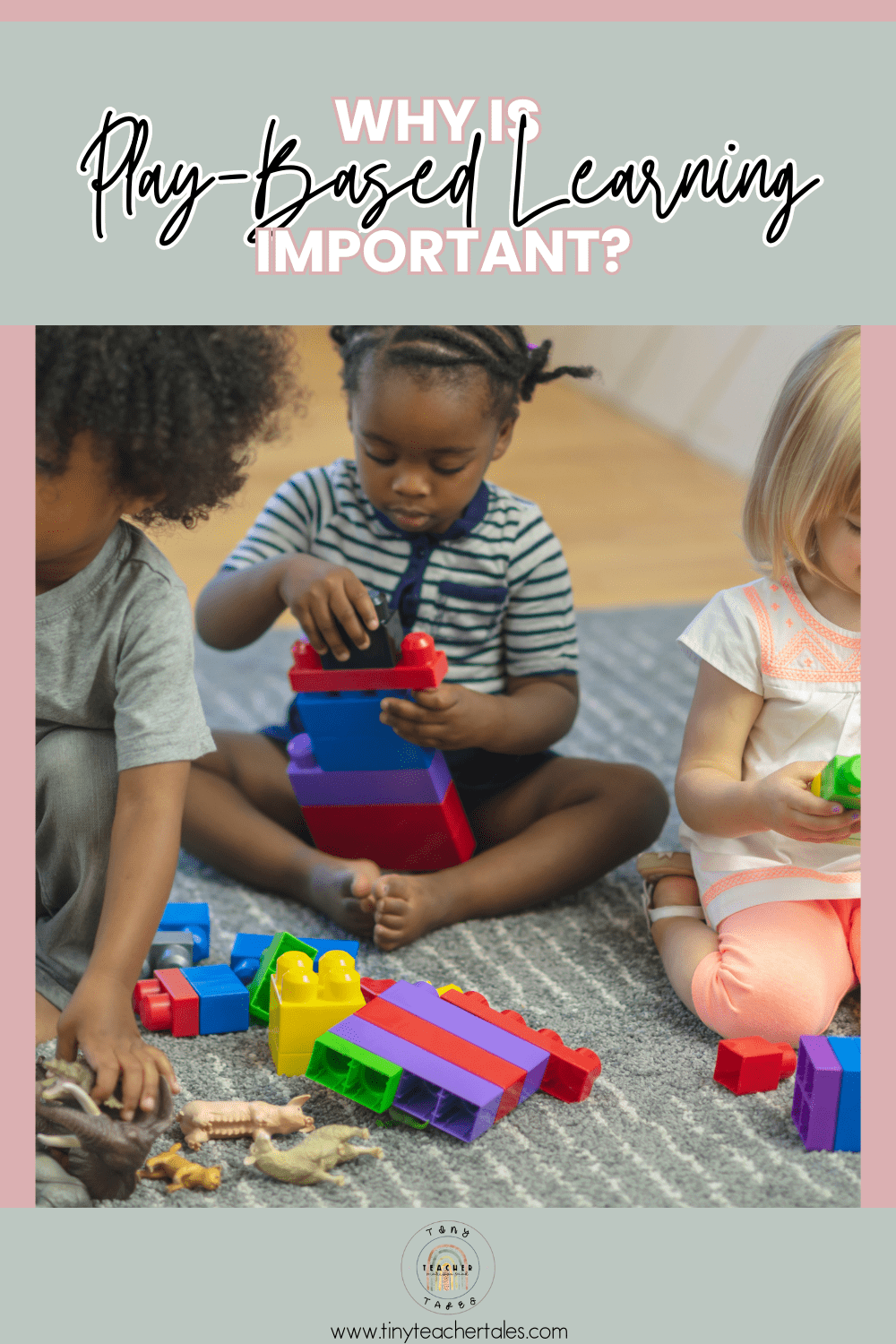Today, let’s chat about something close to my heart and crucial for our little ones: play-based learning. You might have heard this term buzzing around the preschool community, and for good reason! Play isn’t just a fun activity for kids; it’s a powerful tool for learning and development. Let’s dive into why play-based learning is SO essential and how we can effectively implement it in our classrooms!
This post may contain affiliate links, which means I may receive a commission, at no extra cost to you, if you make a purchase through a link. Please see my full disclosure for further information.
Why Play-Based Learning Matters
- Fosters Cognitive Development: Through play, children explore concepts like numbers, shapes, and spatial relationships. They solve problems, experiment, and discover new ideas—all while having fun! This kind of hands-on learning is far more engaging and memorable than traditional rote learning.
- Enhances Social Skills: When kids play together, they learn to share, take turns, and communicate their ideas. These interactions build their social skills and help them understand the perspectives of others.
- Encourages Creativity and Imagination: Play allows children to create their own worlds and scenarios. This kind of imaginative play is crucial for developing creativity and thinking outside the box.
- Develops Physical Skills: Whether it’s building with blocks, running around the playground, or playing with sensory bins, children are constantly developing their fine and gross motor skills through play.
- Boosts Emotional Well-Being: Play is a natural way for children to express their feelings and work through their emotions. It provides a safe space for them to explore and understand their inner world.


Implementing Play-Based Learning in the Classroom
Now that we understand the benefits, let’s talk about how we can create an environment that nurtures play-based learning.
1. Create a Playful Environment
Your classroom should be a place where children feel free to explore and play. Set up different learning stations with a variety of materials—blocks, art supplies, sensory bins, costumes for role play, and books. Make sure the space is safe and inviting, encouraging children to dive in and engage with the materials. For every theme I do, I create a sensory bin, building center, and dramatic play area that relate to our theme. My kids love how each of the centers is connected and that they can rotate to each one.
2. Incorporate Play into the Daily Routine
Instead of separating playtime from learning time, integrate play throughout the day. For example, you can use a game to teach counting or a storytelling session to enhance language skills. The key is to make learning feel like a natural part of their play. This also will help to decrease behaviors. When the child is engaged they will have an easier time staying focused on the task.
3. Follow the Child’s Lead
Observe what interests the children and build on those interests. If a group of kids is fascinated by dinosaurs, set up a dinosaur dig in the sensory bin or read books about prehistoric times. When children are interested in what they’re learning, they’re more engaged and motivated. Let them explore! Children are figuring out what they like and need time and a variety of play experiences to learn about what interests them.
4. Encourage Social Play
Facilitate activities that require teamwork and collaboration. Group projects, cooperative games, and dramatic play scenarios help children learn to work together and develop their social skills. Children gain so much language from being around their peers and playing. Their natural environment makes them more comfortable and open to trying new things.



5. Provide Open-Ended Materials
Give children materials that can be used in multiple ways. Items like blocks, clay, and fabric scraps allow for creativity and imagination, as there’s no right or wrong way to use them. I love to include some sort of open-ended item in my dramatic play center and see what creations the kids come up with in using those items.
6. Be a Play Partner
Join in the play! Sometimes, children need a little nudge to get started or might benefit from seeing how an adult engages in play. Your participation shows them that play is valuable and can lead to discoveries. This also takes it from free play to guided play and provides much more intentional instruction but in a play-based way.
7. Reflect and Document
Take time to reflect on the play activities and observe what the children are learning. Document these moments with photos, notes, or even short videos. This not only helps you plan future activities, but allows you to share the child’s progress with their parents.



Play-based learning isn’t just a trend; it’s a proven approach that helps children thrive. By creating a playful, engaging, and supportive environment, we’re setting the foundation for lifelong learning and development. So, let’s embrace the power of play and watch our little ones soar!
Let’s learn and grow together!
